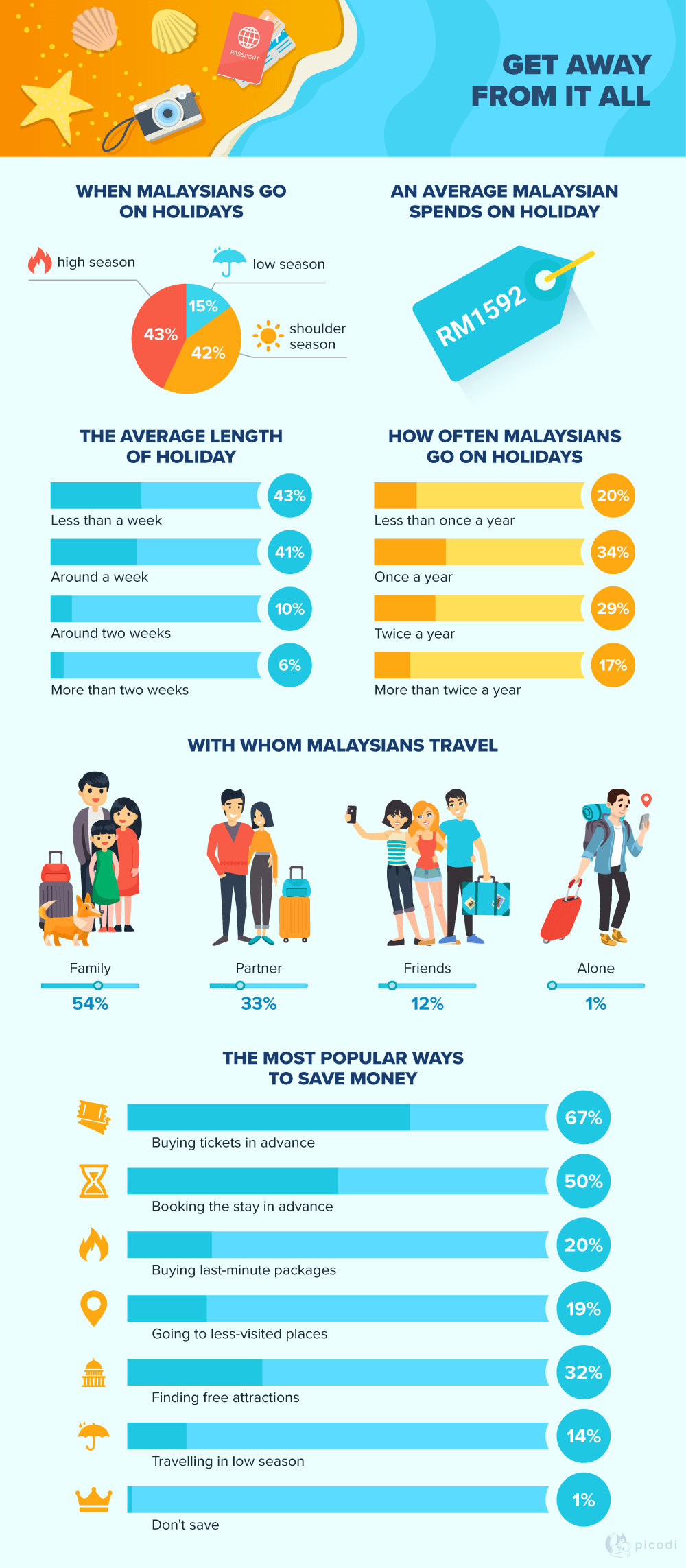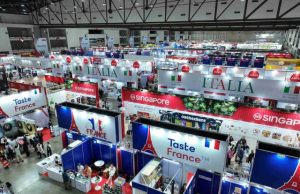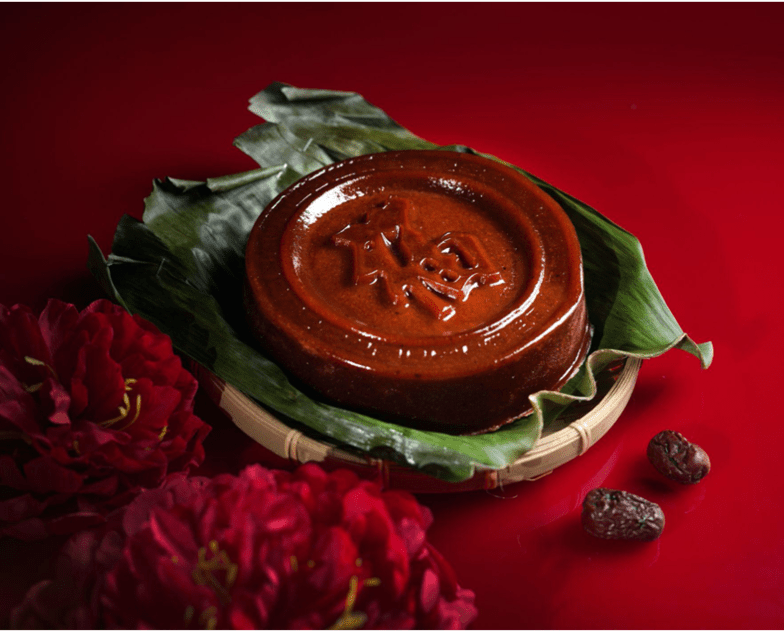10 June 2019 – A report by Picodi
Over the decades, travel and tourism have grown to become one of the world’s largest economic sectors, generating about 10% of world GDP. Tourists became a prominent source of revenue for many people. Furthermore, travelling became so popular that some places in the world, like Venice or Dubrovnik, have to deal with the problem of overtourism.
It’s no wonder that now when travelling from one side of the globe to the other is easier than ever, people go on trips more often. According to the World Tourism Organization’s forecasts, international tourist arrivals will reach 1.8 billion by 2030. And while Europe is still the top tourist destination, Asia Pacific is the fastest growing region in recent years.
What impact do these trends have on Malaysians? Picodi Analysis Team decided to find out more about the habits and preferences of Malaysian travellers. Read further to learn how often and with whom Malaysians travel, how much money they spend, what are the top travel destinations and Malaysians’ approach to organising trips.
Top destinations

According to the survey results, the vast majority of Malaysians prefer domestic travels over going abroad. 74% of surveyed Malaysians declared that they would rather spend their holidays in their country when 26% opted for international travels.
Among those who decide to travel abroad, the most popular countries to visit were Thailand, Indonesia, China, Singapore and Taiwan. For those who prefer the Malaysian landscape, among the top destinations were Kuala Lumpur, Penang and Melaka.
Once in a blue moon

When Malaysians go on their holidays? The shoulder season is gaining its fans around the world since it allows to visit the popular tourist attractions in decent weather and with more affordable prices. Its growing popularity was also noticed by Malaysians — 42% of respondents declared that they travel during the shoulder season. 43% chose the high season and the remaining 15% prefer to travel during the budget-friendly low season.
The question remains, how much money Malaysians are willing to pay for their leisure? According to the survey results, an average Malaysian spends RM1,592 per travel. However, only 1% of respondents said that they don’t try to save on trips — the rest of them have some smart tricks which make the whole venture more affordable. Among the most popular answers, 67% of surveyed Malaysians declared that they buy tickets in advance and 50% book their stay ahead of time.
It looks like Malaysians prefer shorter getaways as 43% of respondents claimed their trips last less than a week. 41% said that they spend around a week on holidays and 16% two weeks or more. On the other hand, 1 out of 3 surveyed Malaysians goes on holiday once a year and 46% twice a year or more frequently. 20% of respondents have the opportunity to go on a trip less than once a year.
With whom Malaysians spend their holidays? Majority of the surveyed travel with their family or partner (54% and 33% respectively). 12% go with friends and only 1% prefer to travel alone.
All by myself

We already know when and where Malaysians travel but how do they organise their trips? The overwhelming majority of respondents (88%) prefer to organise everything by themselves while only 12% rely on travel agencies.
The main reasons for self-organised trips pointed out by Malaysians were the ability to match everything according to preferences (66%) and the cheaper price (33%). Those who travel with agencies mention that it saves time (54%) and is more comfortable (23%).
Explore the unknown

We asked Malaysians whether they prefer to go somewhere new or re-visit their favourite places. The results show that most of them (79%) would rather explore new places and only one-fifth of respondents (21%) chose to go back to places they already know.
When it comes to organising a trip, are there any differences between women’s and men’s attitude? It turns out that men are more spontaneous in the matter of organising journeys. Nevertheless, most people prefer to plan in advance — 67% of men and 74% of women.
Sunbathing on the ravishing Bali beaches, exploring the old alleys of Paris or surfing the waves of the Australian coast? When asked about the favourite way of spending holidays, more than half of the Malaysian respondents (61%) chose sightseeing as their favourite activity. It was followed by lying on the beach (28%) and the least popular — active rest (11%).
When in Rome, do as the Romans do – the old proverb says. However, there are different approaches when travelling, especially when it comes to means of transportation or food. Among the surveyed Malaysians, 50% chose the local public transport as their favourite way of transportation, followed by renting a car (39%) and taxi (10%). As for food, 42% look for places that serve familiar dishes, 39% try local cuisine and 14% take food with them.
In theory, taking a holiday is a way to rest from work. However, sometimes it’s impossible to break free from incoming calls or emails. It turns out that almost half (47%) of surveyed Malaysians are willing to perform job-related tasks during their holidays.
Around the world

We asked travellers from 41 countries how much money they spend on average per holiday. Based on the answers, we prepared a ranking which indicates the biggest spenders.
An average Malaysian spends RM1,592 per person on a holiday, which converted into USD amounts to $383. It places Malaysia quite low in the ranking. Still, most frugal travellers come from Indonesia and Pakistan — they spend $207 and $191 respectively. Australians spend the most money on holidays — $1,505 per holiday. They are followed by Hongkongers and Finns.
Methodology
This report is based on the survey conducted in April and May 2019 among over 20 000 respondents from 41 countries. For the currency conversion, the average exchange for May 2019 was used.











